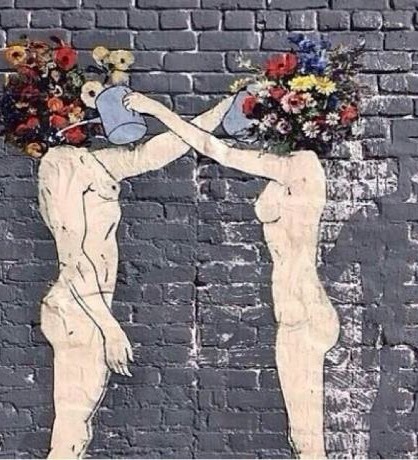“Janie saw her life like a great
tree in leaf with the things suffered, things enjoyed, things done and
undone” (Hurston 8). Much of chapter two is a simile of Janie’s life compared
to a pear tree, especially when she turns into a woman.
As most girls become young women, there is a lot of physical
development. Women develop breast, they develop an hourglass figure. Their
bodies are like “a tree in bloom” (Hurston 11). Most of the time, girls do not
understand this process. They do not understand the features they possess. They
do not see anything valuable about their “glossy leaves and bursting buds”
(Hurston 11), until they have a revelation.
Something “clicks”; they
start thinking about love and boys in a way they never thought of before. They
wonder where all the boys that should be chasing them are. Where are the
“singing bees” (Hurston 11)? Then they begin to imagine the most important day
of their lives- the day they get married. For Janie this was when she
sees the bee pollinating the flower on the tree. She witnesses matrimony; she
witnesses two different forms of nature coming together. It is the realization
that one cannot live without the other. The bee needs the flower just as the
flower needs the bee. A man needs a woman just as a woman needs a man. They need
each other for reproduction. They need each other for support through life’s
challenges. The image below demonstrates this. With a male watering the female’s
flowers and vice versa, it shows that one cannot grow and flourish without the
other. This is what Janie is searching for. She is searching for the man that
helps her thrive. She is searching for the bee to her flower.

I could not agree more. The bees somewhat allude to the we'll know parental talk: The birds and the bees. Hurston relishes on this change of puberty by good nature. I would not have connected to this at first until reading your post as womanhood is a recurring theme within the past two chapters. As Janie begins to develop so do her thoughts and views. With these results Nanny must advise accordingly.
ReplyDeleteVery interesting perspective! I wrote about the Pear tree in my blog post as well, but I love how you connected the figurative language of the chapter with the physical development of a woman's body. I attempted to focus more on the spiritual aspect of the pear tree but nevertheless, I feel as though you hit the nail right on the head with this one! Structurally, it makes sense as to why this chapter would be the first of a chain of events explained by Janie as she attempts to find a starting point for her story.
ReplyDeleteI like what you said about Janie witnessing the bee and the flower and coming to the "realization that one cannot live without another." However, I think this is what, in a sense, messed Janie up, she felt that "matrimony" is the union of to people who need each other in order to function - not necessarily implying love. Janie overlooked the fact that though a daughter may "need" her mother in order to develop, they will not, hopefully, get married. Two friends can spend every day together, two employees may work on assignments in conjunction frequently, yet two people who have a love so strong that the word "love" is too simple of a word to describe their feelings for one another, are the people who should marry in matrimony. This is the only moment so far in the book where I have witnessed Janie in a moment of naivety, but this is a big moment that will carry on throughout.
ReplyDelete